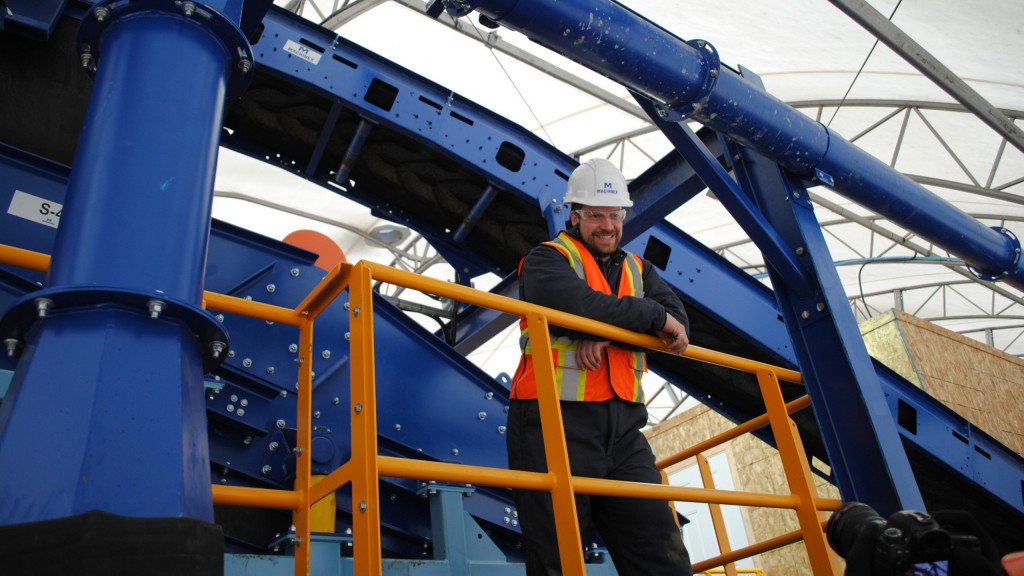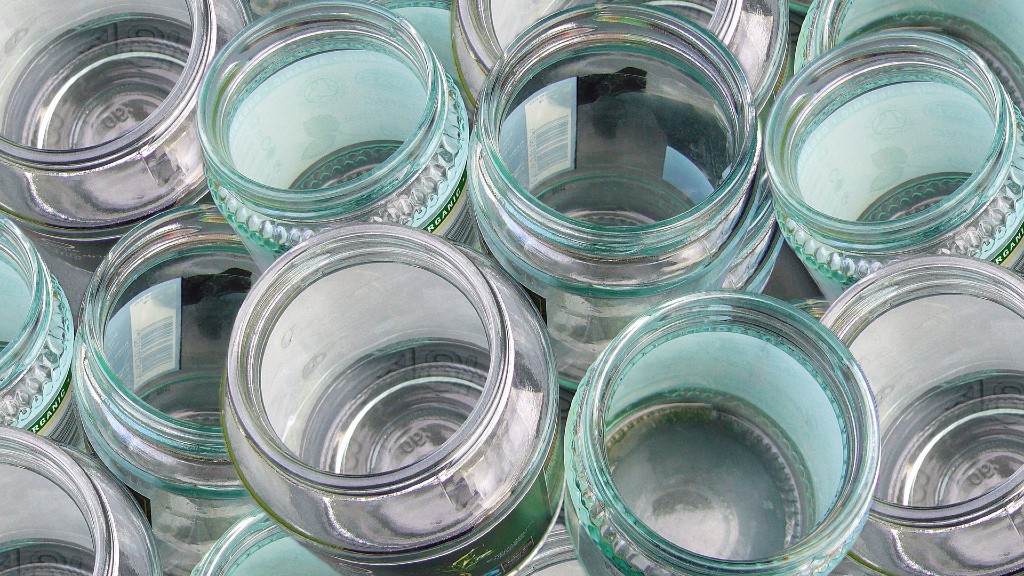Expert Q&A: Breaking down the factors behind scrap glass prices
An interview with glass recycling solution specialist Pierre-André Mongeon

Unlock insights into scrap glass market prices with Recycling Product News' interview with Pierre-André Mongeon, a glass recycling solution specialist from Machinex and a key player in the Glass Recycling Coalition (GRC). We dive into the dynamics and factors shaping the scrap glass market and the nature of scrap glass as a recycled commodity. Read on to find out more.
Recycling Product News: What are some of the major factors affecting scrap glass market prices?
Pierre-André Mongeon: Demand and quality would be the two major factors. Demand remains fairly high for clean cullet (reclaimed ground glass) and fine-grind glass for insulation and sandblasting. Glass manufacturers are usually eager to find clean cullet since they are using only about 33 percent recycled glass, and they could potentially be using up to 95 percent.
Contamination levels of glass are a key factor affecting its price. At 80 percent purity, glass can sell at a negative $35-$50/metric tonne (mt) as landfill cover. At 95 percent purity, some markets can be found for $0-$10/mt. Further treated glass, with up to 99.8 percent purity, and fine grind, can find markets at $70-$100/mt. Colour-sorted and high-purity glass cullet can be sold at $60-$80 USD in Canada and the U.S. taking into account variation in cost per tonne for hauling - from $5 to $20 per tonne - depending on the distance.
RPN: How has the transition to single-stream recycling impacted the quality of scrap glass?
PAM: In the movement toward single-stream, between 1997 and 2017, glass quality has been very affected by the commingled recycling stream. With many single-stream collection systems, hauler trucks compact the commingled material, drop it on a concrete floor, and forklifts and loaders roll on it.
To remove glass as early as possible in the stream, disc screens are used to break it and screen it out of the container line. As a result of this process, glass gets mixed with organics, ceramics, shredded paper, and other small objects less than 50 mm. Glass will be about 20-30 percent contaminated. So instead of having revenue from glass, many MRFs have to pay to get rid of it.
Back in the early 80s, we used a dual-stream system. We put paper and cardboard in one bin and containers and unbroken glass in another. Being source-separated, glass was easier to sort, and MRFs had a greater value for their "clean" glass.
Nowadays, most of us can recycle (about 90 percent of Canadians have access to recycling programs) and most use one bin (single-stream). Single-stream was implemented to save on hauling prices and decrease greenhouse gases. This method of collection, aiming for convenience and higher participation levels, however, has resulted in a more than 20 percent increase in tonnage collected, but a net decrease of over 12 percent in overall tons recycled.
RPN: How have markets for recycled glass changed in North America?
PAM: In 50 years, glass bottle manufacturing has dropped by about 50 percent, since PET and aluminum cans have taken a large part of the container market. Glass bottle weights are also about 40 percent less than they were.
Still, the use of cullet in the manufacture of glass has increased steadily from about 22 percent in 1988, to over 33 percent in 2012. In the 1970s, bottle bill legislation passed in many U.S. states encouraged glass manufacturers to use cullet. The industry now fully understands that using cullet allows furnaces to operate at lower temperatures, which extends furnace life, reduces costs, and lowers stack emissions. We also know that using glass cullet in the process of making new bottles will decrease energy requirements by three percent for every 10 percent of cullet used, and that recycled glass can be substituted for up to 95 percent of raw materials.
The natural resources used in glass manufacturing are sand, limestone, and soda ash. Although these resources are abundant in North America, they are geographically separated by long distances, which leads to high transportation costs in procuring these raw materials. Thus, using recycled glass for manufacturing new glass helps conserve oil and gas.
In the U.S. today, 2.4 million tons of recycled glass are used annually to make new bottles and jars, and about 60 percent of all recycled glass is used for new containers or for a second-life application.
RPN: How has the glass manufacturing industry changed in recent years?
PAM: As glass containers lost market shares to aluminum cans, PET, and other plastic materials over the last two decades, the glass container industry has consolidated and reduced capacity. Three companies - Owens-Brockway, Gallo Glass Company and Saint-Gobain Glass - supply about 90 percent of glass container demand in the U.S. (9.36 million tons, or 60.6 pounds per person, per year). In 2010, there were approximately 25 million glass containers produced, with nearly 75 percent being beer bottles, and the remaining, mostly food containers.
It is notable that back in 1967, 40 container glass manufacturers produced glass from 112 plants in 27 U.S. states. Currently, 17 companies operate 54 facilities in 27 states.
RPN: What are some promising primary and secondary end markets for recycled glass in North America?
PAM: Glass insulation facilities, sandblasting media, and other growing markets are coming on strong lately. Other secondary markets include road construction, either used on the surface, called "glassphalt", or as a road base, aggregate. Recycled glass can also be used as filler aggregate in storm drain and French drain systems, in the fiberglass industry, as glass beads for reflective paints, and in abrasives, foam glass, and other building materials.
Although not yet officially approved as a road base anywhere in Canada, some counties in the U.S. can find markets at about $0/mt. But since sand remains cheap and widely used, it is still preferred in many cities.
In Plessisville, Quebec, where the head office of Machinex is located, and in Victoriaville and Montreal, glass powder is used in sidewalks. It increases concrete durability while reducing adverse environmental impacts.
VERROX is a notable cement additive product that has great market potential for recycled glass. It distinguishes itself by its pozzolanic properties, conferred by its high level of amorphous silicon dioxide (SiO2).
RPN: What are some ways to add value for end markets by improving glass recycling processes?
PAM: Going forward, cleaning glass a little more (moving from 80 percent to 90 percent + purity) would be the cheapest way to improve markets. It does not cost a lot to install a Machinex pre-cleaning system, and purity of over 90 percent is easily achievable. Machinex has recently developed, with its partner Krysteline, several advanced solutions to remove the contaminants in glass to obtain a marketable product that can reach up to 99 percent.
Glass manufacturers will be more attracted by the cleaner glass and will see the benefits. So will recyclers.
This article was originally published in Recycling Product News, Volume 25, Number 8, November/December 2017. It was updated online on November 28, 2023.




